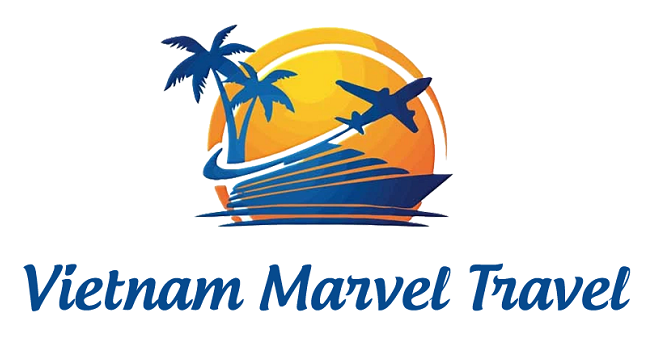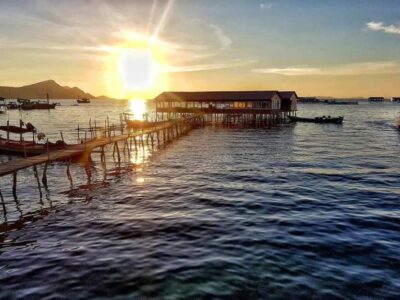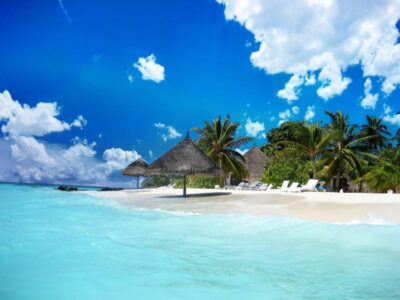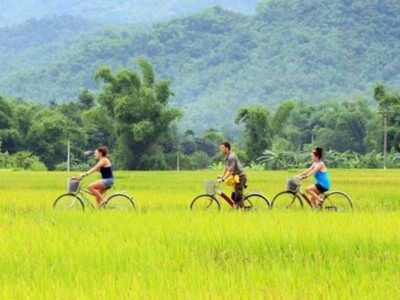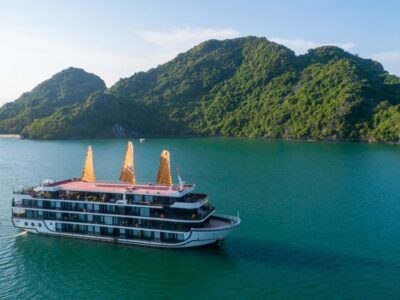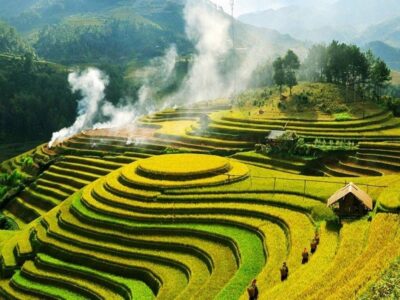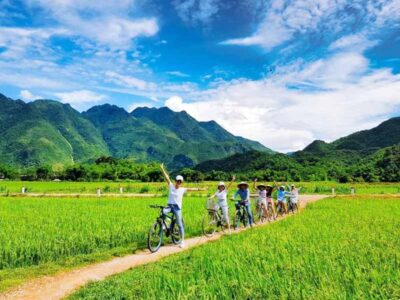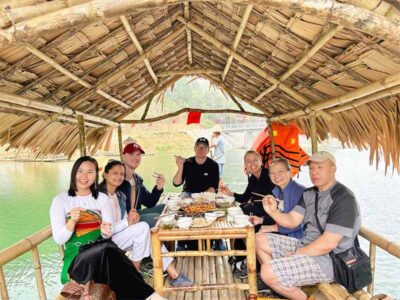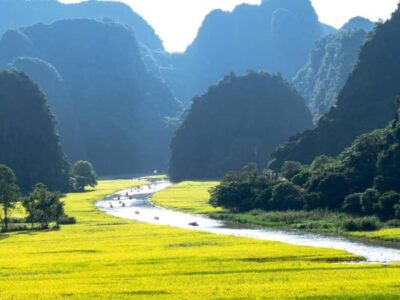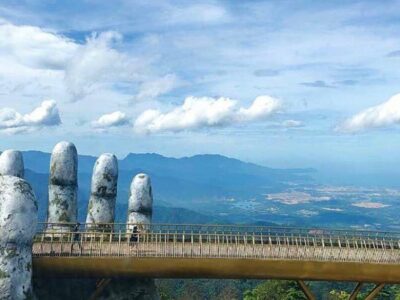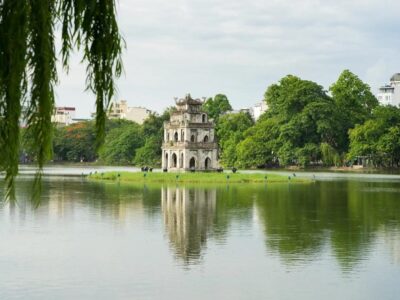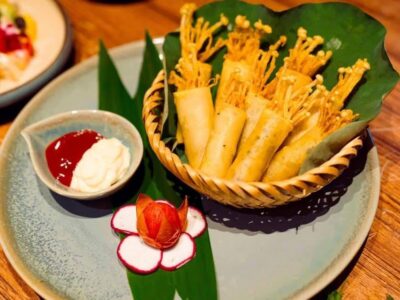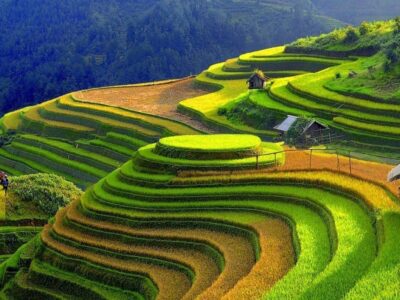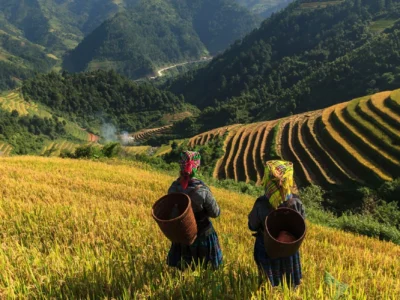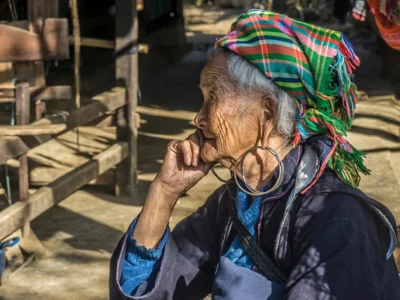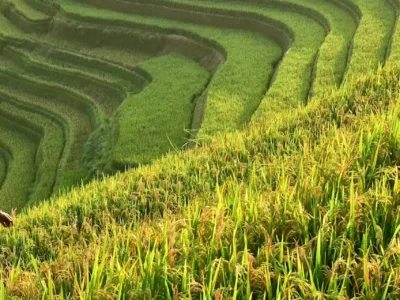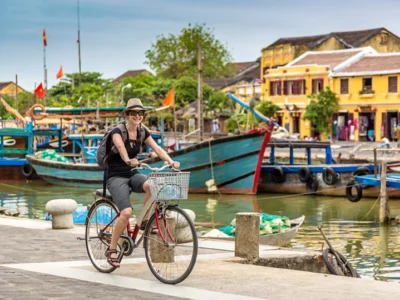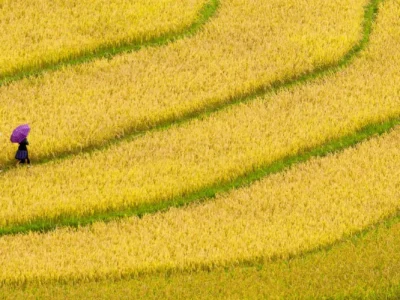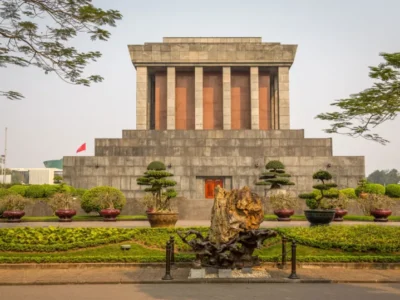Adventure & Trekking Tours
Adventure & Trekking Tours 2026-2027
Fuel your wanderlust with our Adventure & Trekking Tours across Vietnam’s rugged landscapes. Hike through Sapa’s terraced hills, conquer Ha Giang’s mountain passes, and explore hidden caves in Phong Nha.
✅ Thrilling routes for 2025–2026 explorers
✅ Expert guides, safe trails, and authentic homestays
✅ Ideal for nature lovers and active travelers
Embark on your ultimate Vietnam adventure with Vietnam Marvel Travel!
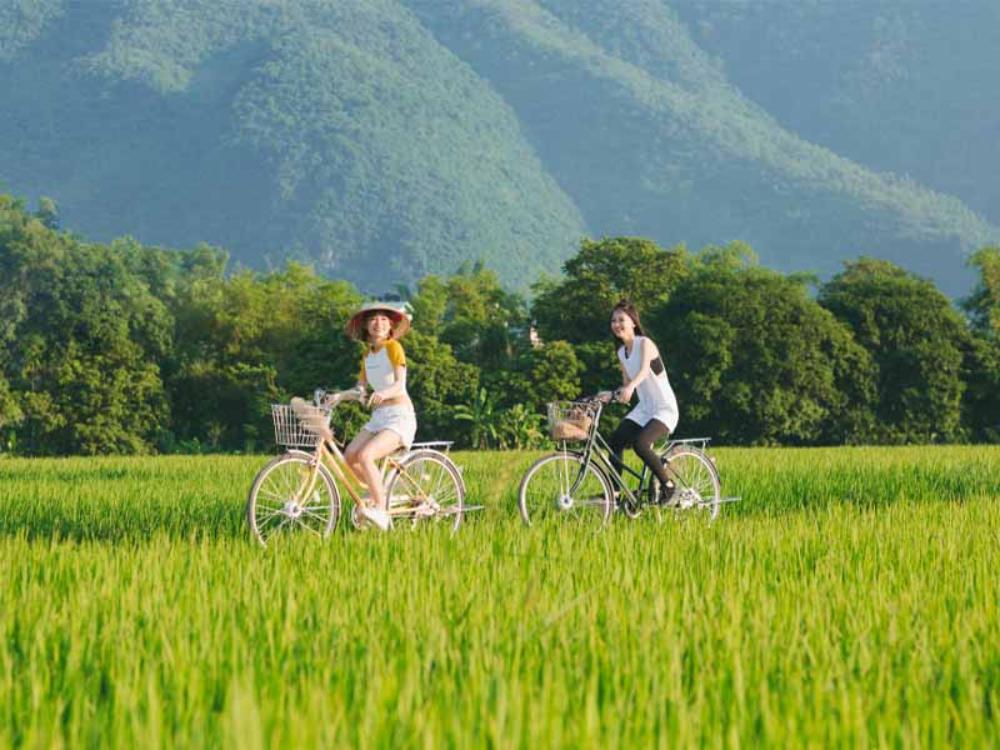
Vietnam Adventure & Trekking Tours – 1 to 10 Days of Unforgettable Journeys
Vietnam Adventure Tours, Vietnam Trekking Tours, Vietnam Hiking Tours, 1-Day Vietnam Trekking Tour, 2-Day Vietnam Trekking Tour, 3-Day Vietnam Trekking Tour, … 10-Day Vietnam Trekking Tour, Vietnam Mountain Trekking, Sapa Trekking Tour, Ha Giang Loop Adventure, Vietnam Jungle Trekking, Vietnam Cultural Trekking Tour
Welcome to Vietnam’s Premier Adventure & Trekking Tours
Embark on the journey of a lifetime with Vietnam Adventure & Trekking Tours — where emerald rice terraces, rugged mountain passes, misty valleys, and ancient hill-tribe villages await. Whether you have just 1 day or a full 10-day trekking adventure, our tours blend breathtaking nature, authentic culture, and immersive outdoor experiences across Vietnam’s most stunning landscapes.
From the majestic mountains of Sapa, the twisting passes of Ha Giang Loop, and the lush jungles of Phong Nha-Ke Bang National Park, to the remote trails of Pu Luong and the highlands of Dalat, every step is an exploration of Vietnam’s raw beauty and cultural depth.
Our Vietnam Trekking Tours by Duration
“1-Day Vietnam Trekking Tour” to “10-Day Vietnam Adventure Tour”
1-Day Vietnam Trekking Tours – Perfect for travelers short on time. Explore highlights such as Cat Cat Village in Sapa, Mai Chau Valley walks, or a jungle trek near Ninh Binh.
2-Day Vietnam Trekking Tours – Overnight adventures in Sapa or Pu Luong, with homestay experiences and stunning sunrise views.
3-Day Vietnam Trekking Tours – Combine mountain treks with cultural immersion in ethnic villages, like the Hmong, Dao, and Tay people.
4-Day Vietnam Adventure Tours – Mix trekking with kayaking, cycling, or caving in areas like Ha Giang, Ba Be Lake, and Phong Nha.
5-Day Vietnam Trekking Tours – Multi-region journeys covering Sapa highlands and Ha Giang passes, perfect for moderate hikers.
6-Day Vietnam Trekking Adventures – Remote off-the-beaten-path routes to Mu Cang Chai, Ban Gioc Waterfall, and hidden valleys.
7-Day Vietnam Trekking Tours – An immersive loop from Hanoi to Sapa, Bac Ha, and Ha Giang for serious trekking enthusiasts.
8-Day Vietnam Adventure Tours – Combine mountains, jungles, and coastal hikes with eco-friendly lodges and guided expeditions.
9-Day Vietnam Trekking Adventures – Epic itineraries that include mountain trekking, jungle exploration, and cultural immersion.
10-Day Vietnam Adventure Tours – The ultimate Vietnam trekking experience, from northern peaks to central highlands and coastal trails.
Top Vietnam Adventure & Trekking Destinations
Sapa Trekking Tour, Ha Giang Loop Tour, Pu Luong Trekking, Phong Nha Jungle Trek, Dalat Hiking Tour, Ba Be Lake Adventure, Mai Chau Trekking Tour
-
Sapa Trekking Tours – Rice terraces, Fansipan Mountain, Hmong and Dao villages.
-
Ha Giang Loop Adventures – Motorbike or trekking the Dong Van Karst Plateau.
-
Pu Luong Nature Reserve – Bamboo forests, limestone mountains, rural villages.
-
Phong Nha-Ke Bang National Park – Jungle treks, caving in Hang En & Son Doong.
-
Mai Chau & Moc Chau – Green valleys and Thai ethnic culture.
-
Ba Be Lake – Waterfalls, caves, and lakeside trekking trails.
-
Dalat Highlands – Pine forests, coffee plantations, and cool climate hikes.
Why Choose Our Vietnam Trekking Tours?
-
Local Expert Guides – Fluent in English & local languages.
-
Authentic Cultural Experiences – Stay with ethnic minority families.
-
Flexible Durations – From 1-day hikes to 10-day expeditions.
-
Eco-Friendly Tourism – Respect for nature & local traditions.
-
Best Price Guarantee – Transparent pricing with no hidden costs.
Packing List for Vietnam Trekking
Vietnam Trekking Packing List, What to Pack for Vietnam Hiking
-
Lightweight trekking boots
-
Quick-dry clothing
-
Rain jacket
-
Warm layers (for northern highlands)
-
Reusable water bottle
-
Sunscreen & insect repellent
-
Small daypack
-
Camera for stunning landscapes
Best Time to Trek in Vietnam
Best Time for Trekking in Vietnam, Vietnam Weather for Hiking
-
Northern Vietnam (Sapa, Ha Giang, Pu Luong): March–May, September–November
-
Central Vietnam (Phong Nha, Bach Ma): February–May, September–December
-
Southern Highlands (Dalat, Cat Tien): November–March
Customer Reviews & Trust
(Keyword cluster: Vietnam Trekking Tour Reviews, Best Rated Vietnam Adventure Tours)
“Our 3-day Sapa trekking tour was unforgettable! The homestay was warm, the food delicious, and the views breathtaking.” – Emma, UK
“We did the Ha Giang Loop trekking tour for 6 days and it was the highlight of our trip to Vietnam.” – Carlos, Spain
What to Avoid on Vietnam Trekking Tours
-
Trekking without a guide in remote areas
-
Overpacking heavy luggage
-
Ignoring weather forecasts
-
Not bringing cash for rural villages
Frequently Asked Questions (FAQs)
-
Do I need to be fit for a Vietnam trekking tour? – Moderate fitness is recommended, but tours can be customized.
-
Are Vietnam trekking tours safe? – Yes, with experienced local guides and proper gear.
-
Can I join a group tour? – Yes, we offer private and group adventures.
-
What’s the best tour for beginners? – Try a 2-day Sapa or Pu Luong trek.
-
Do you provide meals and accommodation? – Yes, all packages include homestays or eco-lodges with meals.
We Offer Many Tour Trekking and Adventure
- Vietnam adventure tours
- Vietnam trekking tours
- Adventure tours in Vietnam
- Trekking tours Vietnam
- Vietnam hiking tours
- 1-day Vietnam trekking tour
- 2-day Vietnam trekking tour
- 3-day Vietnam trekking tour
- 4-day Vietnam trekking tour
- 5-day Vietnam trekking tour
- 6-day Vietnam trekking tour
- 7-day Vietnam trekking tour
- 8-day Vietnam trekking tour
- 9-day Vietnam trekking tour
- 10-day Vietnam trekking tour
- Sapa trekking tours
- Ha Giang loop trekking tour
- Pu Luong trekking tour
- Phong Nha cave trekking tour
- Dalat hiking tours
- Mai Chau trekking tour
- Ba Be Lake trekking tour
- Hanoi adventure tours
- Jungle trekking Vietnam
- Mountain trekking Vietnam
- Cultural trekking Vietnam
- Homestay trekking Vietnam
- Eco trekking Vietnam
- Waterfall trekking Vietnam
- Off-the-beaten-path trekking Vietnam
- Northern Vietnam trekking tours
- Multi-day trekking Vietnam
- Best time to trek in Vietnam
- Vietnam trekking packing list
- Budget trekking tours Vietnam
- Luxury trekking tours Vietnam
- Family trekking tours Vietnam
- Solo trekking tours Vietnam
- Group trekking tours Vietnam
- Guided trekking tours Vietnam
- Self-guided trekking Vietnam
- Remote trekking Vietnam
- Hidden trekking trails Vietnam
- Vietnam trekking and kayaking tour
- Vietnam trekking and cycling tour
- Vietnam trekking and caving tour
- Vietnam trekking with ethnic homestay
- Vietnam trekking with local guide
- Vietnam trekking with waterfall swim
- Vietnam trekking photography tour
30 Best Vietnam Adventure & Trekking Tours in 2025: Ultimate Guide
Vietnam, with its diverse landscapes ranging from mist-shrouded mountains to lush valleys, offers some of Southeast Asia’s most captivating trekking experiences. Whether you’re seeking challenging high-altitude adventures or gentle cultural walks, this comprehensive guide covers everything you need to know about planning your perfect Vietnam adventure & trekking tour in 2025.
Why Vietnam Should Be Your Trekking Destination in 2025
Vietnam has evolved into a premier adventure destination, offering exceptional value compared to more expensive Asian trekking hotspots. The country’s 3,260km length encompasses dramatically different ecosystems and climates, providing year-round trekking possibilities for explorers of all abilities.
What truly distinguishes Vietnam’s trekking scene is the perfect blend of natural beauty and cultural immersion. Unlike purely wilderness-focused destinations, Vietnam’s trails lead you through villages where traditional lifestyles continue largely unchanged, creating opportunities for authentic interactions with the country’s 54 ethnic minorities.
Recent infrastructure improvements, including better access roads to remote regions and upgraded accommodation options, have made 2025 the ideal time to experience Vietnam’s adventure offerings before mass tourism discovers these hidden gems.
Top 10 Vietnam Trekking Destinations for 2025
1. Sapa: The Quintessential Northern Vietnam Trek
Sapa remains Vietnam’s flagship trekking destination, situated 1,600 meters above sea level in the Hoang Lien Son mountain range. The region’s iconic rice terraces cascade down mountainsides like giant green staircases, creating some of Southeast Asia’s most photographed landscapes.
Key Trails:
- Muong Hoa Valley Trek (12km): Ideal for beginners, this gentle walk takes you through H’mong and Dao villages with stellar views of Fansipan Mountain.
- Y Linh Ho – Lao Chai – Ta Van (15km): A perfect day trek through bamboo forests and terraced fields.
- Mt. Fansipan Climb (19km round trip): Challenge yourself with Vietnam’s highest peak (3,143m) – now accessible via either a multi-day trek or a 20-minute cable car ride.
Sapa’s average temperatures range from 15-25°C (59-77°F) during trekking season, with December-February dropping to 7-15°C (45-59°F). The 2-Day Sapa Tour from Hanoi offers a perfect introduction to the region for those with limited time.
2. Ha Giang Loop: Vietnam’s Ultimate Adventure Circuit
Ha Giang Province, bordering China in Vietnam’s far north, offers what many consider to be the country’s most spectacular landscapes. The 350km loop combines both driving/motorcycling sections with exceptional trekking opportunities through the UNESCO-recognized Dong Van Karst Plateau Geopark.
Must-Trek Sections:
- Lung Cu Flag Tower (5km): Trek to Vietnam’s northernmost point with views extending into China.
- Ma Pi Leng Pass (7km): Walk sections of this spectacular mountain pass with 800-meter drops.
- Quan Ba Heaven’s Gate (8km): Hike through the twin mountains known as “Fairy Bosoms” with panoramic valley views.
The region remains significantly less developed than Sapa, with homestays in traditional Hmong, Dao, and Tay houses providing the primary accommodation. April-May and September-October offer ideal trekking conditions with temperatures averaging 18-24°C (64-75°F).
3. Pu Luong Nature Reserve: Off-the-Beaten-Path Serenity
Located just 160km southwest of Hanoi, Pu Luong Nature Reserve represents one of Vietnam’s best-kept trekking secrets. This 17,662-hectare reserve features dramatic limestone karst mountains, lush rice terraces, and primary forests with over 1,000 plant species.
Top Treks:
- Kho Muong Village Loop (15km): Experience traditional Thai stilt houses and stunning valley views.
- Ban Hieu Waterfall Trek (10km): A moderately challenging trail leading to secluded waterfalls and natural swimming pools.
- Don Village to Co Lung (18km): Cross hanging bridges, bamboo water wheels, and terraced fields on this full-day adventure.
The region experiences pleasant temperatures between 18-28°C (64-82°F) during the prime trekking seasons (February-May and September-November). Homestays in traditional Thai ethnic minority stilt houses provide authentic cultural immersion opportunities.
4. Mai Chau Valley: Gentle Cultural Trekking
Mai Chau Valley in Hoa Binh Province offers gentler trekking experiences approximately 140km from Hanoi. The valley floor sits at 150m above sea level and is surrounded by verdant mountains rising to 1,500m.
Recommended Routes:
- Pom Coong – Na Phon Loop (8km): A leisurely walk through White Thai villages and rice paddies.
- Hang Kia – Pa Co (12km): Explore remote H’mong villages with panoramic valley views.
- Pu Luong Connection (20km): For the ambitious, trek from Mai Chau to Pu Luong Reserve over two days.
Mai Chau’s elevation keeps temperatures moderate year-round, ranging from 15-30°C (59-86°F). The valley offers both homestays and more comfortable ecolodges, making it ideal for trekkers seeking cultural experiences with modern comforts.
5. Cat Ba Island: Coastal Karst Trekking
Cat Ba Island provides a unique opportunity to combine trekking with Halong Bay exploration. The island’s national park covers 140 square kilometers with trails cutting through dense jungle and limestone formations.
Notable Treks:
- Cat Ba National Park Summit (18km round trip): Climb to the park’s highest point (331m) for panoramic views across the island and bay.
- Viet Hai Village Trek (9km): Hike through jungle to this isolated fishing community.
- Hospital Cave and Cannon Fort Loop (14km): Combine trekking with historical sites from Vietnam’s revolutionary period.
April-May and September-November offer optimal trekking conditions with temperatures around 22-28°C (72-82°F). Cat Ba provides a wider range of accommodation options than most trekking destinations, from basic homestays to waterfront resorts.
6. Phong Nha-Ke Bang National Park: Cave Trekking Adventures
This UNESCO World Heritage site in central Vietnam houses some of the world’s largest cave systems, including Son Doong (the world’s largest cave). While the most spectacular caves require permits and professional guides, numerous accessible options exist for trekkers.
Cave Trekking Options:
- Paradise Cave Trek (7km): Explore the first kilometer of this 31km cave system via boardwalk, then trek deeper with a guide.
- Dark Cave Adventure (5km): Combine trekking with swimming and kayaking.
- Tu Lan Cave System (2-4 day expeditions): For serious adventurers, multi-day cave trekking with jungle camping.
The region’s humid subtropical climate makes December-March ideal for trekking, with temperatures between 18-23°C (64-73°F). Phong Nha town offers accommodations ranging from backpacker hostels to boutique hotels.
7. Cuc Phuong National Park: Vietnam’s Oldest Protected Forest
Established in 1962, Cuc Phuong National Park represents Vietnam’s pioneering conservation effort. Located 120km southwest of Hanoi, this 22,200-hectare reserve features ancient trees, diverse wildlife, and limestone mountains.
Key Treks:
- Ancient Tree Trail (7km): Walk among 1,000-year-old trees through primary forest.
- Endangered Primate Loop (15km): Combine trekking with visits to conservation centers.
- Mac Lake to Park Headquarters (20km): A challenging full-day trek through varied ecosystems.
The park’s dry season (November-February) offers the most pleasant trekking with temperatures ranging from 15-20°C (59-68°F). Simple park accommodation or nearby ecolodges provide convenient overnight options.
8. Ba Be National Park: Lakes and Limestone
Ba Be National Park in northern Vietnam centers around Vietnam’s largest natural lake, surrounded by limestone mountains and dense forests. The park’s 10,048 hectares encompass diverse ecosystems and Tay ethnic minority villages.
Recommended Treks:
- Dau Dang Waterfall Trail (10km): Follow the Nang River to dramatic cascades.
- Lung Tam – Ban Duon Circuit (18km): Trek through ethnic minority villages and karst landscapes.
- Limestone Cave Exploration (various distances): Combine trekking with visits to Puong Cave, Hua Ma Cave, and others.
October-April provides ideal trekking conditions with temperatures averaging 15-25°C (59-77°F). Traditional Tay stilthouse homestays around the lake offer authentic accommodation options.
9. Ta Xua: Cloud Hunting in Vietnam’s “Cloud Paradise”
Ta Xua, located on the border of Yen Bai and Son La provinces at elevations reaching 2,865 meters, has emerged as one of Vietnam’s most magical trekking destinations. The region is famous for its “sea of clouds” phenomenon where trekkers can walk above cloud formations.
Key Routes:
- Dinosaur Spine Ridge (12km): Trek along a narrow mountain ridge resembling a dinosaur’s back, surrounded by clouds.
- Ta Xua Peak (16km round trip): Challenge yourself with a summit climb offering 360-degree mountain views.
- H’mong Village Circuit (10km): Combine cloud hunting with cultural experiences in remote communities.
December-March offers the best cloud-hunting opportunities with temperatures ranging from 5-15°C (41-59°F). Basic homestays with H’mong families provide the primary accommodation options.
10. Y Ty and Lao Than Mountain: Emerging Trekking Destination
Y Ty, located in Bat Xat district of Lao Cai province near the Chinese border, represents one of Vietnam’s newest trekking destinations. At elevations between 1,600-2,700 meters, the region offers spectacular mountain landscapes and distinctive Ha Nhi ethnic minority cultures.
Notable Treks:
- Lao Than Mountain (14km round trip): Nicknamed “the roof of Lao Cai,” this challenging trek reaches 2,860 meters with camping options.
- Y Ty – A Lu Circuit (18km): Traverse terraced fields and Ha Nhi villages known for their unique mushroom-shaped houses.
- Cloud Bridge Trek (9km): Experience walking through clouds at various viewpoints.
The region experiences four distinct seasons, with September-November and March-April offering ideal trekking conditions. Temperatures range from 10-18°C (50-64°F) during these periods, with potential snow in winter months.
10 More Emerging Vietnam Trekking Destinations for 2025-2027
11. Sin Ho Plateau: The “Roof of Lai Chau”
Located in northwestern Vietnam’s Lai Chau Province, Sin Ho sits at 1,500 meters above sea level and remains largely untouched by tourism. The weekly Sunday market draws ethnic minorities from surrounding mountains.
Key Treks:
- Sin Ho – Pha Din Pass (22km): A challenging full-day trek through remote villages.
- Sin Ho Market Loop (10km): Combine market visits with surrounding village exploration.
- Ta Phin Valley (15km): Descend into spectacular valleys with terraced rice fields.
12. Nam Cang – Topas Trail: Luxury Meets Adventure
This newly developed trail network connects Nam Cang Red Dao village with the Topas Ecolodge in Sapa district, offering a perfect blend of challenging trekking and comfortable accommodation.
Route Options:
- Nam Cang to Topas (18km): Trek through bamboo forests and terraced rice fields with premium accommodation at both ends.
- Red Dao Cultural Circuit (12km): Focus on cultural immersion with demonstrations of traditional paper making, herbal baths, and indigo dyeing.
- Thanh Kim Valley (15km): Less-visited valley with spectacular mountain scenery.
13. Binh Lieu: Vietnam’s “Great Wall” Experience
Binh Lieu district in Quang Ninh province borders China and features a mountain ridge with border markers resembling a miniature Great Wall. October-December transforms the landscape with silvergrass flowers creating golden ridgelines.
Recommended Treks:
- Border Marker Route (15km): Trek along the Vietnam-China border with panoramic views.
- Cao Xiêm Peak (10km round trip): Climb to 1,429 meters for sunrise viewing.
- Cao Son – Quang Nam (18km): Traverse ethnic minority villages with traditional homestays.
14. Ngoc Con – Trung Khanh: Karst Landscapes and Waterfalls
Located in northeastern Cao Bang province, this emerging destination features spectacular karst formations, rice terraces, and the magnificent Ban Gioc Waterfall (Vietnam’s largest).
Trek Highlights:
- Ngoc Con Rice Terrace Circuit (12km): Trek through some of Vietnam’s most beautiful terraced fields.
- Ban Gioc Waterfall Trail (8km): Approach Southeast Asia’s largest waterfall via less-traveled paths.
- Phong Nam Valley (15km): Explore limestone caves and traditional Nung villages.
15. Yen Tu Mountain: Buddhist Pilgrimage Trekking
Combining spirituality with trekking, Yen Tu Mountain in Quang Ninh Province rises to 1,068 meters and houses numerous pagodas and temples dating back to the 13th century.
Pilgrimage Treks:
- Traditional Pilgrimage Route (6km): Follow stone paths through ancient forests to Dong Pagoda at the summit.
- Meditation Circuit (10km): Connect lesser-visited temples and meditation caves.
- Waterfall Route (14km): Alternative path featuring multiple cascades and viewpoints.
16. Xuan Son National Park: Limestone Forests Near Hanoi
Located in Phu Tho province just 150km from Hanoi, Xuan Son offers pristine forests, limestone mountains, and Muong ethnic minority villages without the crowds of more famous parks.
Top Treks:
- Xoan Forest Trail (9km): Trek through rare xoan trees and bamboo forests.
- Langur Spotting Route (12km): Opportunities to observe endangered Delacour’s langurs.
- Muong Cultural Circuit (15km): Connect five traditional villages with distinctive architecture.
17. Lang Biang Mountain: Dalat’s Trekking Haven
Lang Biang Mountain (2,167m) near Dalat in the Central Highlands offers cooler trekking experiences in pine forests reminiscent of European landscapes.
Popular Routes:
- Lang Biang Summit (14km round trip): Trek through pine forests to panoramic views of Dalat.
- Bidoup Peak (25km): More challenging two-day trek to the highest peak in the region (2,287m).
- K’Ho Village Trail (10km): Combine mountain trekking with visits to indigenous K’Ho communities.
18. Ta Nang – Phan Dung: Vietnam’s Most Beautiful Trek
This 55km trail connecting Lam Dong, Ninh Thuan, and Binh Thuan provinces has gained fame as Vietnam’s most beautiful long-distance trek, typically completed over three days.
Trail Sections:
- Ta Nang to Phan Dung (55km total): Cross multiple ecosystems from pine forests to grasslands.
- K’ho Village to Base Camp (18km): First day’s trek through ethnic minority lands.
- Summit Trail (22km): Middle section with the highest elevations and most spectacular views.
19. Kon Chu Rang Nature Reserve: Wild Central Highlands
This remote 15,446-hectare reserve in Gia Lai province offers pristine forests, waterfalls, and wildlife viewing opportunities with very few visitors.
Adventure Treks:
- Waterfall Circuit (20km): Connect the reserve’s five major waterfalls over two days.
- Primeval Forest Trail (15km): Trek through ancient forests with trees over 1,000 years old.
- Ba Nam Commune Trek (18km): Visit Bahnar ethnic villages while exploring forest paths.
20. Son Tra Peninsula: Coastal Mountain Trekking
Just 10km from Da Nang city, the Son Tra Peninsula (also known as Monkey Mountain) offers the rare opportunity to combine mountain trekking with coastal views and beaches.
Coastal Treks:
- Ban Co Peak Circuit (14km): Climb to 693m for 360-degree views of Da Nang Bay.
- Monkey Spotting Trail (8km): Trek through forests inhabited by rare red-shanked douc langurs.
- Hidden Beach Route (12km): Connect secluded beaches via forest trails.
Best Time to Visit Vietnam for Trekking in 2025
Vietnam’s elongated geography creates distinct regional climate patterns, making trekking possible somewhere in the country year-round. However, timing your visit to match optimal conditions in your chosen region is crucial.
Northern Vietnam (Sapa, Ha Giang, Pu Luong)
Prime Trekking Seasons:
- September to November: Perfect conditions with clear skies, moderate temperatures (15-25°C/59-77°F), and spectacular autumn colors. Rice terraces turn golden in October, creating Vietnam’s most photogenic landscapes.
- March to May: Spring brings warm days (18-28°C/64-82°F), blooming wildflowers, and refreshing green rice terraces. Occasional mist adds atmosphere to mountain photographs.
Avoid:
- December to February: While visually stunning with occasional snow at higher elevations, temperatures can drop below freezing at night (0-15°C/32-59°F), requiring specialized cold-weather gear.
- June to August: The rainy season brings daily downpours, high humidity (85-95%), muddy trails, and increased risk of landslides. Fansipan and other high mountains are frequently cloud-covered.
Central Vietnam (Phong Nha, Bach Ma)
Ideal Trekking Periods:
- February to April: Dry season with comfortable temperatures (20-30°C/68-86°F) and moderate humidity (60-75%). Cave systems are accessible with stable water levels.
- August to September: Brief window between heavy rain periods with lush landscapes and fewer tourists.
Challenging Times:
- October to December: Potential flooding and typhoons make trekking dangerous, particularly in Phong Nha and coastal mountains.
- May to July: Extremely hot (30-40°C/86-104°F) with high humidity (80-95%), creating challenging conditions even for experienced trekkers.
Southern Highlands (Dalat, Ta Nang)
Prime Trekking Weather:
- November to March: Dry season with cooler temperatures (15-25°C/59-77°F) and low humidity (50-65%). Clear skies provide excellent visibility from mountain viewpoints.
- June to August: While lowland Vietnam experiences intense heat, the highlands maintain moderate temperatures (18-28°C/64-82°F) with afternoon showers that clear quickly.
Less Ideal:
- April to May: Hot season before monsoon (25-35°C/77-95°F) with high UV levels and occasional forest fires.
- September to October: Peak rainy season with daily downpours and potential trail washouts.
Regional Weather Comparison for 2025 Trekking
| Region | Best Months | Avg. Temp (°C) | Rainfall (mm) | Humidity (%) | Sunrise/Sunset
|
|---|---|---|---|---|---|
| Sapa | Sep-Nov, Mar-May | 15-25 | 50-100 | 70-85 | 5:30AM/6:30PM |
| Ha Giang | Oct-Nov, Mar-Apr | 18-26 | 40-90 | 75-85 | 5:45AM/6:15PM |
| Phong Nha | Feb-Apr, Aug-Sep | 20-30 | 60-150 | 70-90 | 5:30AM/6:45PM |
| Dalat | Nov-Mar, Jun-Aug | 15-25 | 30-100 | 50-75 | 5:45AM/6:30PM |
| Pu Luong | Sep-Nov, Mar-May | 18-28 | 40-80 | 65-80 | 5:30AM/6:30PM |
Complete Vietnam Trekking Packing List for 2025
Proper gear significantly impacts your trekking experience. Vietnam’s diverse climates require adaptable equipment. This comprehensive packing list covers everything from essentials to region-specific items.
Clothing Essentials
Base Layers:
- 3-4 quick-dry, moisture-wicking t-shirts (synthetic or merino wool)
- 2 long-sleeve UV-protection shirts (UPF 50+ recommended)
- 1-2 thermal tops for northern treks (September-March)
- 4-5 pairs of quick-dry underwear
- 1 sports bra per 2 days for women
Mid Layers:
- 1 lightweight fleece or down vest
- 1 quick-dry long-sleeve hoodie
- 1 packable insulated jacket (essential for northern mountains October-April)
Outer Layers:
- 1 waterproof, breathable rain jacket (with sealed seams)
- 1 pair waterproof rain pants (for monsoon season treks)
- 1 poncho (doubles as ground cover for rest breaks)
Lower Body:
- 2 pairs of lightweight, quick-dry hiking pants (convertible zip-off recommended)
- 1 pair of shorts for warmer regions
- 1 pair of thermal leggings for northern treks (December-February)
Footwear:
- Primary hiking boots with ankle support and grippy soles (waterproof for northern regions)
- Trail runners or approach shoes for easier terrain
- Water sandals for river crossings and evening wear
- 5-7 pairs of moisture-wicking hiking socks (including 1-2 waterproof pairs for northern regions)
Headwear:
- Wide-brimmed sun hat or cap with neck protection
- Bandana or buff (multiple uses: sun protection, dust mask, sweat band)
- Warm beanie for high altitudes and northern winter treks
Trekking Equipment
Bags:
- 35-45L backpack for multi-day treks (with rain cover)
- 15-20L daypack for single-day excursions
- Dry bags for electronics and spare clothing
- Compression sacks to maximize pack space
Trekking Aids:
- Collapsible trekking poles (essential for steep terrain)
- Gaiters for leech protection (central and southern regions)
- Microspikes for winter treks in Sapa/Fansipan (December-February)
- Headlamp with spare batteries (minimum 250 lumens)
Hydration & Nutrition:
- 2-3L water capacity (bladder and/or bottles)
- Water purification tablets or portable filter
- Electrolyte powder packets
- Energy bars/trail mix (limited options available in remote areas)
Sleep System (for homestay treks):
- Lightweight silk sleep liner (for homestay beds)
- Inflatable pillow
- Earplugs and eye mask
Sleep System (for camping treks):
- 3-season sleeping bag (comfort rating to 5°C/41°F for northern regions)
- Inflatable sleeping pad (R-value 2-4)
- Compact tent if not provided by tour operator
Health & Hygiene
First Aid:
- Personal medications
- Anti-diarrheal medication (Imodium)
- Oral rehydration salts
- Antihistamines for insect bites
- Pain relievers (ibuprofen/acetaminophen)
- Altitude sickness medication for high peaks (Diamox)
- Bandages, blister treatment, antiseptic wipes
- Anti-leech spray for central Vietnam treks
- Antibacterial hand sanitizer
Insect Protection:
- DEET insect repellent (30-50% concentration)
- Permethrin-treated clothing for leech and tick protection
- Mosquito head net for evening use in central regions
Toiletries:
- Biodegradable soap and shampoo
- Quick-dry travel towel
- Toilet paper and pack-out bags
- Hand sanitizer
- Sunscreen (minimum SPF 50)
- Lip balm with SPF protection
Electronics & Documentation
Navigation & Communication:
- Smartphone with offline maps downloaded (Maps.me, AllTrails)
- Power bank (minimum 10,000mAh)
- Universal adaptor with surge protection
- Emergency whistle and signaling mirror
- Compass and physical map backup
Photography:
- Camera with weatherproof protection
- Extra memory cards and batteries
- Lightweight tripod for landscape photography
Documentation:
- Passport with minimum 6 months validity
- Travel insurance documents (with trekking/evacuation coverage)
- Printed and digital copies of trekking permits
- Emergency contact information
- Cash in small denominations (ATMs unavailable in remote areas)
Region-Specific Gear Additions
Northern Vietnam (Sapa, Ha Giang) Oct-Mar:
- Insulated gloves
- Warm hat covering ears
- Thermal base layers
- Down jacket (comfort rating to -5°C/23°F)
- Waterproof hiking boots
Central Vietnam Cave Trekking:
- Dry bag backpack liner (100% essential)
- Headlamp with 300+ lumens
- Water shoes with sturdy soles
- Quick-dry clothes (multiple sets)
- Helmet (usually provided by operators)
Southern Highland Treks:
- High SPF sunscreen (UV index regularly exceeds 11)
- Breathable, loose-fitting clothing
- Wide-brimmed hat
- Hydration bladder with 3L capacity
- Lightweight hiking boots with excellent ventilation
Authentic Vietnamese Trekking Food Experiences
Vietnamese trekking cuisine varies dramatically by region, with local specialties enhancing the cultural dimension of your adventure. Most multi-day treks include meals prepared by homestay hosts or guides, offering authentic insights into regional culinary traditions.
Northern Mountain Specialties
Breakfast Energizers:
- Thắng Cố: A hearty H’mong specialty stew made from horse or buffalo meat with over 20 herbs, providing sustained energy for mountain ascents.
- Xôi Nếp: Sticky rice steamed with herbs, often colored naturally with forest ingredients and wrapped in banana leaves for convenient trail eating.
- Cháo Thịt Bò: Rice porridge with beef and ginger, perfect for cold mountain mornings.
Trail Lunches:
- Bánh Cuốn: Rice rolls filled with minced pork and mushrooms, easily packed and consumed on trails.
- Cơm Lam: Rice cooked in bamboo tubes, a traditional food among mountain ethnic groups that stays fresh throughout the day.
- Thịt Trâu Khô: Buffalo jerky – the perfect high-protein trail snack, often flavored with local herbs and chili.
Homestay Dinners:
- Lợn Cắp Nách: Black H’mong pork slow-roasted over open fire, typically served during special occasions or for larger trekking groups.
- Cá Suối Nướng: Freshwater fish grilled in banana leaves with mountain herbs, a specialty in streams near Sapa and Ha Giang.
- Rau Rừng Xào Tỏi: Foraged mountain vegetables stir-fried with garlic – highly nutritious and uniquely available in highland regions.
Central Vietnam Trekking Cuisine
Morning Fuel:
- Bún Bò Huế: Spicy beef noodle soup originating from Hue, providing protein and carbohydrates for energy.
- Bánh Ít Trần: Sticky rice dumplings filled with shrimp and pork, wrapped in banana leaves.
- Cơm Hến: Rice with baby clams, peanuts, and herbs – a protein-rich Hue specialty.
Packed Trail Foods:
- Bánh Tét: Cylindrical sticky rice cakes with mung bean and pork filling that keep well during day treks.
- Gỏi Cuốn: Fresh spring rolls with herbs, rice noodles, and protein, excellent for lunch breaks.
- Trái Cây Sấy: Locally dried fruits including mango, banana, and jackfruit for quick energy boosts.
Evening Meals:
- Mực Một Nắng: Squid dried in the sun then grilled – a specialty near coastal trekking areas.
- Nem Nướng: Grilled pork skewers with herbs and rice paper wrappers.
- Canh Chua Cá: Sour fish soup with tamarind, pineapple, and local vegetables, perfect for replenishing electrolytes.
Southern Highland Trek Foods
Breakfast Options:
- Bánh Mì Op La: Vietnamese baguette with fried eggs, a fusion breakfast common in Dalat.
- Avocado Sinh Tố: Avocado smoothies with condensed milk, utilizing local Dalat avocados.
- Cà Phê Sữa Đá: Vietnamese iced coffee with condensed milk – the essential morning caffeine boost.
Trail Provisions:
- Dalat Rau Củ Quả: Locally grown vegetables like artichokes, carrots, and strawberries make excellent trail snacks.
- Mứt Dalat: Preserved fruits and jams, a specialty of the highland region.
- Bánh Tráng Nướng: “Vietnamese pizza” – rice paper grilled with egg, green onion, and dried beef.
Post-Trek Specialties:
- Lẩu Bò Dalat: Beef hotpot with highland vegetables, perfect for refueling after long treks.
- Nem Nướng Nha Trang: Grilled pork rolls served with rice paper and herbs.
- Canh Atiso: Artichoke soup, a Dalat specialty with detoxifying properties after strenuous hikes.
Trail Cooking and Food Safety
Most multi-day treks include meals prepared by homestay hosts or guides, but understanding local food preparation enhances your experience:
- Water Safety: Drink only boiled, filtered, or purified water. Many homestays provide herbal tea made with boiled water.
- Rice Preparation: The staple of trekking meals, rice is traditionally cooked in specialized pots over wood fires, giving it a distinctive smoky flavor.
- Preservation Methods: In remote areas without refrigeration, smoking, drying, and fermentation preserve meats and vegetables.
- Foraging Traditions: Many guides demonstrate traditional knowledge by identifying edible plants, but never consume wild plants without expert confirmation.
Trusted Tour Operators for Vietnam Trekking in 2025
Selecting the right tour operator significantly impacts your trekking experience. These companies consistently receive outstanding reviews for their Vietnam adventure offerings:
Vietnam Marvel Travel
Specialization: Comprehensive trekking packages across all Vietnam’s major mountain regions, with particular expertise in northern Vietnam.
Key Offerings:
- Customizable private treks with flexible itineraries
- Community-based tourism with direct benefits to ethnic minority villages
- English, French, and German-speaking certified mountain guides
Customer Ratings: 4.9/5 from 725+ reviews (TripAdvisor 2024)
Unique Strength: Their Amazing Vietnam 15-Day Tour combines trekking with cultural experiences and relaxation, perfect for travelers seeking a balanced itinerary.
Safety Standards:
- Comprehensive first aid training for all guides
- Satellite communication devices in remote areas
- Emergency evacuation protocols with international hospitals
Sapa Sisters
Specialization: Female-led trekking experiences in Sapa region, exclusively employing H’mong women as guides.
Key Offerings:
- Cultural immersion with female perspective on ethnic minority life
- Homestays exclusively in H’mong family homes
- Handicraft workshops and cooking classes integrated into treks
Customer Ratings: 4.8/5 from 1,200+ reviews (TripAdvisor 2024)
Unique Strength: Social enterprise model where guides co-own the business, ensuring ethical practices and authentic experiences.
Safety Standards:
- Regular guide training in wilderness first aid
- Detailed weather monitoring systems
- 24/7 support team in Sapa town
Oxalis Adventure
Specialization: Technical cave exploration and trekking in Phong Nha-Ke Bang National Park.
Key Offerings:
- Exclusive access to Son Doong Cave (world’s largest)
- Combination jungle-cave expeditions
- Technical adventure trekking requiring good fitness
Customer Ratings: 5/5 from 2,300+ reviews (TripAdvisor 2024)
Unique Strength: Scientific partnerships with British Cave Research Association, providing unparalleled geological and historical context.
Safety Standards:
- International-standard caving safety protocols
- Maximum 10:1 client-to-guide ratio
- Comprehensive medical evacuation insurance included
Mr. Linh’s Adventures
Specialization: Remote northeastern Vietnam treks in Ba Be, Cao Bang, and Ha Giang regions.
Key Offerings:
- Off-grid trekking in rarely visited regions
- Combined trekking-kayaking expeditions
- Authentic homestays with Tay, Nung, and Dao families
Customer Ratings: 4.9/5 from 890+ reviews (TripAdvisor 2024)
Unique Strength: Comprehensive knowledge of border regions and relationships with remote communities typically closed to tourists.
Safety Standards:
- Local guides from each specific region
- Detailed mapping of remote medical facilities
- Customized risk assessments for each trek
Highland Sport Travel
Specialization: Central Highland treks focusing on Dalat, Bidoup-Nui Ba National Park, and Ta Nang-Phan Dung trail.
Key Offerings:
- Multi-day camping treks with porters
- Photography-focused trekking itineraries
- Combination trekking-cycling adventures
Customer Ratings: 4.8/5 from 650+ reviews (TripAdvisor 2024)
Unique Strength: Expertise in highland ecosystems with certified naturalist guides providing detailed flora and fauna interpretation.
Safety Standards:
- GPS tracking provided to emergency contacts
- Comprehensive camping and wilderness equipment
- Rigorous guide certification program
Vietnam Trekking Highlights and User Experiences
The true essence of Vietnam trekking comes alive through authentic experiences that combine natural beauty with cultural immersion. Here are key highlights that make Vietnam trekking uniquely rewarding:
Cultural Immersion Through Homestays
Vietnam’s trekking homestay network offers unparalleled cultural experiences. Unlike many countries where trekkers primarily camp, Vietnam’s established homestay tradition allows direct immersion in ethnic minority communities.
Authentic Experiences:
- Family-Style Dining: Share meals around traditional wood fires while learning about local customs.
- Agricultural Participation: Many homestays welcome trekker participation in rice harvesting, corn planting, or buffalo tending.
- Textile Demonstrations: Observe traditional weaving, batik, or embroidery techniques passed through generations.
- Evening Music: Many hosts share traditional instruments and songs after dinner.
A night in a Thai stilthouse in Pu Luong or H’mong home in Sapa provides cultural insights impossible to gain from standard accommodations.
Biodiversity Encounters
Vietnam’s diverse ecosystems support remarkable biodiversity, with trekking routes offering opportunities to observe rare and endemic species.
Notable Wildlife Possibilities:
- Langur Spotting: Endangered primates including red-shanked douc langurs in Son Tra and Delacour’s langurs in Cuc Phuong.
- Bird Watching: Over 828 bird species, with trekking areas like Bach Ma National Park hosting concentrations of endemic birds.
- Butterfly Valleys: Certain regions including Tam Dao and Cuc Phuong feature spectacular butterfly concentrations with hundreds of species.
- Rare Plants: Vietnam’s mountainous regions contain numerous endemic plants, including over 200 orchid species.
Many tours now incorporate wildlife guides who enhance trekking experiences through expert interpretation.
Photographic Opportunities
Vietnam offers trekkers exceptional photography potential with dramatic landscapes and cultural elements:
Prime Photo Locations:
- Muong Hoa Valley (Sapa): September-October when terraced rice fields turn golden before harvest.
- Ma Pi Leng Pass (Ha Giang): Early morning when valleys fill with mist (6-8AM).
- Y Ty Cloud Sea: December-March between 5-7AM when temperature differentials create dramatic cloud formations.
- Ban Gioc Waterfall: August-September when water volume peaks after summer rains.
Photography Tips:
- Pack lightweight tripods for low-light mountain photography
- Morning mist in valleys creates magical atmospheric effects (5-7AM)
- Plan treks to reach viewpoints during golden hour (one hour after sunrise or before sunset)
- Include local people in landscapes to demonstrate scale and cultural context
Route Variety and Accessibility
Vietnam’s trekking infrastructure has dramatically improved, with routes now categorized by difficulty and accessibility:
Beginner-Friendly Treks:
- Cat Cat Village Loop (Sapa): 5km circular route with minimal elevation gain
- Thac Ba Lake Trails: Gentle lakeside paths with minority village visits
- Mai Chau Valley Floor: Flat rice field walks between Thai villages
Intermediate Adventures:
- Muong Hoa Valley Full Circuit: 15km with moderate elevation changes
- Pu Luong Nature Reserve Traverse: 20km over two days with homestays
- Bach Ma National Park Summit: 15km with 1,200m elevation gain
Advanced Expeditions:
- Fansipan Full Ascent: Three-day expedition to Vietnam’s highest peak
- Ha Giang Complete Loop Trek: Combined trekking/transport across the entire karst plateau
- Bidoup Mountain Multi-Day: Technical ascent requiring camping and porters
This variety ensures trekking options for all fitness levels and experience, with many operators offering custom difficulty adjustments.
2025-2027 Vietnam Trekking Trends and Developments
The Vietnam trekking scene continues to evolve rapidly. These emerging trends will shape experiences over the next few years:
Sustainable Trekking Initiatives
Vietnam’s tourism authorities have prioritized sustainability with several key developments:
- Plastic-Free Trekking Zones: Sapa and Phong Nha have implemented plastic reduction programs with refill stations and biodegradable alternatives.
- Community-Based Tourism Certification: New government standards ensure fair compensation to minority communities hosting trekkers.
- Trail Maintenance Programs: Volunteer opportunities where trekkers can participate in trail building and maintenance projects.
- Wildlife Protection Corridors: New trekking routes designed to avoid sensitive habitat while still providing scenic experiences.
Tech Integration for Enhanced Experiences
Digital tools are transforming trekking accessibility and safety:
- Augmented Reality Trail Guides: Apps overlaying information about surrounding peaks, flora, and cultural sites.
- Virtual Advance Previews: 360° trail footage allowing trekkers to preview routes before committing.
- Real-Time Translation Devices: Facilitating deeper communication with homestay hosts and local guides.
- Emergency Satellite Connectivity: Improved coverage in remote areas with emergency beacon capabilities.
Culinary Trekking Experiences
Food-focused treks are gaining popularity:
- Harvest Participation Treks: Timing trips to coincide with rice, corn, or tea harvests with hands-on participation.
- Foraging Expeditions: Specialized guides teaching identification of edible plants, fungi, and herbs.
- Cooking Instruction Trek-Breaks: Pauses during multi-day treks for cooking lessons using trail-gathered ingredients.
- Ethnic Cuisine Preservation: Treks specifically supporting documentation and preservation of traditional food practices.
Combination Adventure Packages
Multi-activity experiences are trending for 2025-2027:
- Trek-Paddle Combinations: Particularly in regions like Ba Be and Pu Luong where hiking connects to kayaking segments.
- Cycle-Trek-Spelunk Itineraries: Central Vietnam packages combining multiple adventure disciplines.
- Photography Masterclass Treks: Specialized treks with professional photographers providing instruction in landscape and cultural photography.
- Wellness Trekking: Combining hiking with yoga, meditation, and traditional herbal knowledge.
Conclusion: Planning Your Ultimate Vietnam Trek in 2025
Vietnam’s trekking landscape offers extraordinary diversity, from misty northern mountains to jungle-covered karst formations and coastal ranges. The combination of natural beauty, cultural immersion, and improving infrastructure makes 2025 an ideal time to experience these trails.
For first-time visitors, the established routes in Sapa provide an excellent introduction with 2-Day Sapa Tour from Hanoi packages offering efficient access. More adventurous travelers should consider the Ha Giang region for Vietnam’s most spectacular mountain scenery or Pu Luong for a perfect balance of moderate trekking and authentic cultural experiences.
Whatever your preference, Vietnam’s mountains are calling. Plan carefully around seasonal weather patterns, pack appropriately for your chosen region, and prepare for an adventure that combines physical challenge with profound cultural insights.
Ready to experience Vietnam’s extraordinary trekking opportunities? Contact Vietnam Marvel Travel to design your perfect adventure itinerary tailored to your preferences, fitness level, and travel dates.
📞 Ready to Sail?
Don’t miss the chance to explore one of the most iconic Vietnam destinations. Whether you’re looking for a 2-day adventure, a luxury 3-day cruise, or a day trip from Hanoi, we have the perfect journey for you.
🎟️ Book now for exclusive 2025–2026 early bird offers!
📩 Have questions? Contact our Halong Bay cruise experts today.
